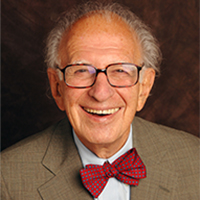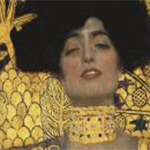
What happens in your brain when you look at Viennese Expressionist artist Gustav Klimt’s famous 1901 painting, “Judith?”
A lot more than you might imagine, according to Nobel laureate neuroscientist Eric R. Kandel, MD. In his book, “The Age of Insight: The Quest to Understand the Unconscious in Art, Mind and Brain from Vienna 1900 to the Present,” Kandel explores his fascination with the young field of neuroaesthetics and the question that has intrigued him as a scientist and an art collector: Why do works of art move us so powerfully?
Kandel will share his insight as the Arthur Holly Compton Lecturer for the Washington University in St. Louis Assembly Series at 5 p.m. Tuesday, Oct. 28, in Graham Chapel. The event, which will conclude with a book signing, is free and open to the public.
In “The Age of Insight,” Kandel speculates on the neurochemical cognitive circuitry being activated inside the viewer’s brain while studying Klimt’s painting.

“When you fall in love with a work of art, you activate some of the same dopamine pathways that you activate when you fall in love with a person,” he said. “The reason why ‘Judith’ (at left) is so powerful is because it evokes a number of different processes in our brain.”
By focusing on a distinct place and period – Vienna circa 1900 – and on three artists’ work in portraiture, “The Age of Insight” also shines a light on a fascinating time when artists were influenced by new theories of the unconscious from the likes of Sigmund Freud and William James. (For an in-depth review of his book, visit the Chronicle of Higher Education.)
At Columbia University since 1974, Kandel holds the titles of University Professor, and the Fred Kavli Professor and director of the Kavli Institute for Brain Science. He also is a senior investigator at the Howard Hughes Medical Institute. He joined the Columbia faculty as founding director of the Center for Neurobiology and Behavior.
A graduate of Harvard College and New York University School of Medicine, Kandel trained in neurobiology at the National Institutes of Health and in psychiatry at Harvard Medical School.
He is the author of a number of academic and popular books, including “In Search of Memory: The Emergence of a New Science of Mind,” which was made into a documentary film.
At the top of his long list of professional awards and honors is the Nobel Prize in Physiology and Medicine, awarded in 2000 for his part in discovering a revolutionary approach to studying how memory is formed.
For information and updates on Assembly Series programs, visit the Assembly Series or call 314-935-4620.